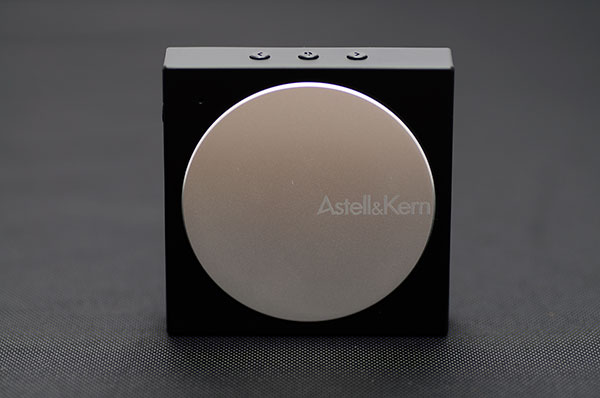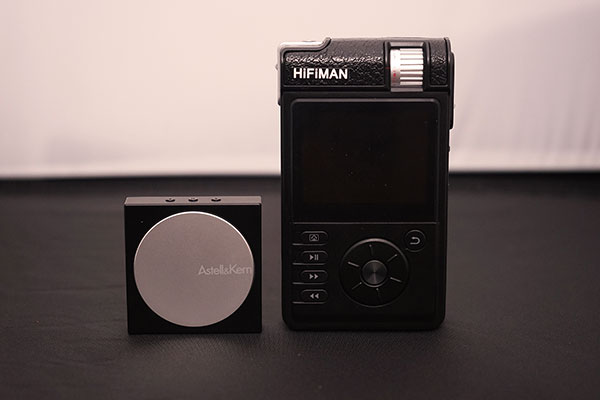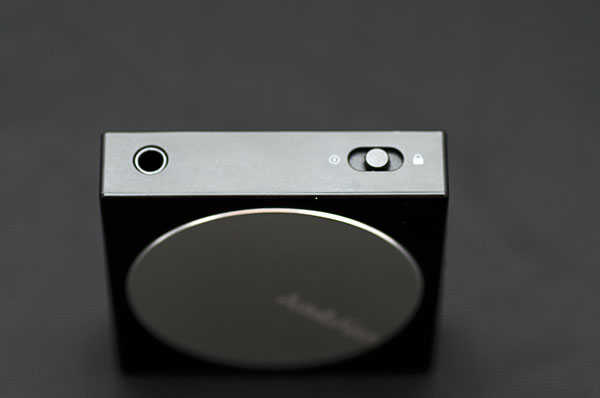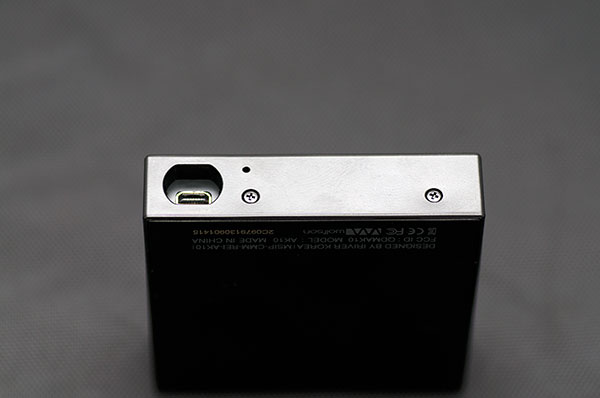The Astell & Kern AK10 is a compact portable USB-DAC and OTG amplifier using a WM8740 Wolfson DAC chip capable of decoding at 24/96. It is priced at $299.
Disclaimer: The Astell & Kern AK10 sent to us is a sample in exchange for our honest opinion. We thank the team at Astell & Kern for giving us this opportunity.
To read more about Atell & Kern products we reviewed on Headfonics click here.
Note, this review follows our new scoring guidelines for 2020 which you can read up on here.
Astell & Kern, along with Ibasso, FiiO and Hifiman have pretty much dragged the DAP market from out of its darkened sulky cave it has lived in for the last 7 years since the launch of the iPhone.
DAP’s are cool again according to iRiver and the Astell & Kern brand has given us some stellar and cool “must-have ” products such as the AK100, AK120 and the fiscal and audiophile behemoth – the recently launched AK240.
Yet somewhere in that trailblazing awesome line up stands something of an ‘ugly duckling’, the USB and portable AMP/DAC, the AK10.
Design
Ok so it is not ugly, that’s totally unfair, it is kind of cute and oh so portable but it does convey a very spartan minimalist feel to it that may polarize users and it does sort of stand out there on there on its own, doing its own thing.
Compared to the FiiO E18 or the V-Moda Vamp Verza it certainly lacks all the nerdy buttons and “effects” both of them carry. Instead, in keeping with the AK line the AK10 has only the most basic of button setups targetting the most critical needs of any DAC/AMP portable and on the go desktop user.
In the hand, the AK10 is small, lightweight, and looks to be a mix of plastic and aluminum with a super large volume control dial right in the middle of the unit. In fact, when you look right at it, the volume dial is pretty much the focus of attention. You simply cannot miss it.
Connections
To the top and bottom, you have the USB connection and the headphone output socket (3.5mm) which doubles as the line out to amplification if required. On one side you have raised circular track controls (forward, back, and pause/play), and the rest is just flush or plain with no controls.
It’s not gaudy, quite discreet and all connect tightly or press down accurately without any wobbles or delayed response.
Sadly the USB connection is not the run of the mill micro USB. You cannot put any old cable in it due to the shaping of the case around it. That is a shame since babying cables is something I hate doing. It could be argued that it gives a stronger connection for moving around and there is some validity in that but it does mean you are forced to buy their cables only as replacements.
The existing set of cables are pretty good though with Android, iOS, and PC/USB all catered for though in the current edition of the AK10 so depending on your source there should be the right choice of cable available.
Volume Control
So back to that big volume dial (aka the ‘turntable’) just staring at me. The last dial of this proportion was the ALO Audio Island but the implementation was actually very good indeed given the dial had a start and endpoint.
The problem with the AK10 dial was there is just a little or no indication at what volume point you are at when you use it for a period of time. It is not stepped in any way so you can literally go round and round nonstop with only the blue and red lights to indicate if you are decreasing or increasing the volume.
True, its analog-type interface is in keeping with the analog pot on the AK100/120/240 series and it spins very smoothly and precisely but I found this experience to be less satisfying simply because I had no clue what volume I was really at before churning out any noise from my source.
The blue and red LED lights do indicate if the volume is decreased or increased though but I think I spun the wheel about 15 times once connected to the PC as a USB DAC to get the volume back down to a reasonable level when used in conjunction with Foobar’s own level adjuster.
In short, it lacks context without a limit to the turning ability or a small digital display to show the volume level you are currently at. Pressing the play and pause button together will reset the volume to zero but at $299 I might actually expect this to be a bit more controlled if an analog feel is what they are aiming for.
Form Factor
The form factor itself runs against the grain of other similar devices. Usually, they are patterned to be seamless with the source device such as mobile phone or a slimline DAC. In fact, the AK10 closest form factor buddy is the AK100 and I honestly cannot see them being paired together for obvious reasons.
So, whilst its small and cute and well made it doesn’t gel for me with modern slimline mobile phones such as the iPhone or the Galaxies as does the Verza, the Solo DB, the E18, or even the bulky Theorem. It is more of a low profile extension on the cable to a source device than a mirror of the device form factor.
Of course, plenty will love that small form factor much like the FiiO E6 but given the AK10’s purpose is not to double amp in the same way as the E6 it does mean smaller DAPs such as the Clip which paired beautifully with the E6 are out.
Carry Case
On the flip side, the tiny carry case is very well done and fits the AK10 just perfectly and unlike the AK100 case thankfully it comes free of charge in the retail package. It also sports a small strap for attaching say to a belt or even a slim type portable device that reminds me of the late 90’s paging machines.
The button control of the AK10 is easily accessed meaning you can place your source in one pocket and the AK10 on your strap and manage your playback fairly easily without touching your source. In fact, for me, the belt gives the AK10 form factor purpose, without which I am not entirely sure how I would have paired it with my source as mentioned previously.
Overall the AK10 looks modern and minimalist and in keeping with many of the current gadget fashion trends. It is built well and does convey the feel of an Astell & Kern product but it does also feel like a bit of an oddball with some design decisions that don’t quite meet up to expectation and without the little belt type case it just doesn’t quite gel with any of the devices I might expect to use it with.
Functionality
The AK10 works in 2 main ways – as a USB DAC/AMP for the pc users and as DAC/AMP for digital audio out capable portable source devices such as Apple and Samsung phones (iOS and Android). Note the AK10 does have an internal amp but it is not a particularly strong amp at that powering mainly IEM’s and easy to drive headphones.
DAC
The DAC is the familiar but often enjoyed WM8740 Wolfson DAC chip capable of decoding at 24/96 and it is best known for its inherent musical qualities when implemented correctly. It is also in a host of current devices such as the DX50 from Ibasso and the FiiO X3 to name but a few. There are now more modern (and more expensive) DAC chips, including WM’s own 8741 in the market but the WM8740 persists as a chip of choice for many.
Bear in mind though whilst it is capable of 24/96 decoding the limitations of iOS and Android digital out still means you have a wide variety of bitrates being sent down to the AK10. Therefore reality some versions of phones and operating systems could end up sending you 44.1k max regardless. No big deal since all devices of this type are realistically in the same boat.
USB-DAC
In use with a PC, installation is simple and quick with no extra proprietary drivers required to be downloaded. The AK10 showed up in WASAPI in Foobar and playback was largely smooth and jitter-free though switching window focus on Windows 7 did result in a small amount of stutter which I have noticed in some lower-end USB powered DAC’s before.
Much like the FiiO E18, the AK10 can do a small amount of control via the hardware buttons in terms of playback in most of the audio software such as Foobar. Mac users, sorry didn’t have a chance to test but by all accounts, it seems ok there also.
OTG
Pairing up with iOS and Android was simple enough also though at times I was not wholly sure I had bypassed the DAC but given the difference in audio quality when testing straight out of my S3 jack and then using the AK10 I was pretty sure the unit was engaged. Again the hardware playback buttons worked pretty seamlessly with both operating systems on the mobile platforms.
Amp
The AK10 also houses an internal amp but not an especially powerful one and not as powerful as say the Theorem 720’s class-leading amp or the excellent Cypher Labs Solo series but then you wouldn’t expect it to given its lower price point except that the FiiO E18 also had a more powerful amp housed inside it and comes in at almost half the price.
After testing across a few earphones and headphones it was a hiss free experience thankfully unlike the Theorem with IEM’s but it started sounding thin and lacking dynamics and fullness the higher up the headphone food chain I went leaving really only ultraportable and portable cans 32ohm and below as worthwhile.
Given its size that is pretty understandable and for IEM users the amp should be just fine for power.
Sound Impressions
The key selling point of the AK10 is the claim that it will improve or enhance audio quality over simply plugging in your earphone or headphone to the PC onboard soundcard or straight out of the iPhone or Samsung Galaxy (Android).
In short, that is true, the AK10 does enhance the audio quality in all three equations but the kicker for me is that, well, so does the FiiO E18 and it is much cheaper. The difference is not quite enough for a $299 interface DAC/AMP in comparison to the E18 which for me does a whole lot more for a whole lot less.
I won’t knock the tonality though of the AK10 which conveys all the tonal characteristics of the WM8740 being well implemented. The AK10 is warm, musical, and most certainly hiss free when selected with the right headphone.
The AK10 for me presented a fairly convincing and natural tonality that kept things fairly lively and engaging and was far from being boring, neutral, or cold and sterile. Using Merlin’s or some dual BAs (Nocs I think) hanging around the house it kept the pace pretty well with slightly better bass detail and texture than from the source DAC and amp as well as a more engaging and dynamic presentation.
In short, the Ak10 felt snappier and more lively but without feeling like I was really being blown away like the Theorem or the E18 (for differing reasons).
Select Comparisons
Certainly, the AK10 is a step up on the Samsung S3 onboard DAC and amp but the difference, though noticeable, was diminished slightly on the iPhone 5 series which made the AK10 slightly less compelling than I hoped it would be.
With the PC it was mostly the same experience but I honestly think if you are going for a PC setup this should not be your first choice since the FiiO E17 and E09k can be bought for the same price and that is a real powerhouse budget experience. The AK10 is much more at home driving IEM’s in a portable solution.
Overall the Ak10 will upgrade your experience from onboard sound cards and DAC/AMP’s on compatible mobile phones but not massively so. If your big thing is a hiss free IEM experience then most likely the AK10 is a really good fit but at $299 it faces stiff competition from the cheaper FiiO E18 and about $150 up the scale you have the very compelling -R Solo from Cypher Labs.
Our Verdict
These days the bypass solution for Apple and Android is not an entirely new concept. When the Solo came out people went ape for the ability to do this, now Fostex, FiiO and Sony have come out with constantly evolving devices that make this market far more competitive than it used to be.
Added to that the awesome Astell & Kern DAP’s and the whole need to play music from your mobile phone becomes less and less appealing to many. You could argue that at $299 the AK10 is much cheaper than those offered by the likes of Sony.
Then along comes the FiiO E18 and simply blows that argument away which leads me back to the original statement – it is a bit of an ugly duckling for what it is and capable of more than how it looks.
How it looks is all Astell & Kern (yes I know Beyer have one out also but it feels more like an AK unit to me), how it functions is ok also but how it sounds, though musical and engaging, is perhaps a bit limited given the price point.
Astell & Kern AK10 Technical Specifications
- Output Level 1.7Vrms [1kHz@24bit 48kHz, No Load PC standard]
- Audio Performance SNR 110dB [1kHz@24bit 48kHz, No Load]
- THD+N Typ. 0.008% [1kHz@24bit 48KhZ, No Load]
- Crosstalk 106dB [1kHZ@24bit 48kHz No Load]
- Frequency Response ±0.2dB [20Hz~20kHz@24bit 48kHz No Load]
- USB POWER : 5.0V, 500mA
- Accessories include: AK10 USB cable, AK10 Lightning cable






